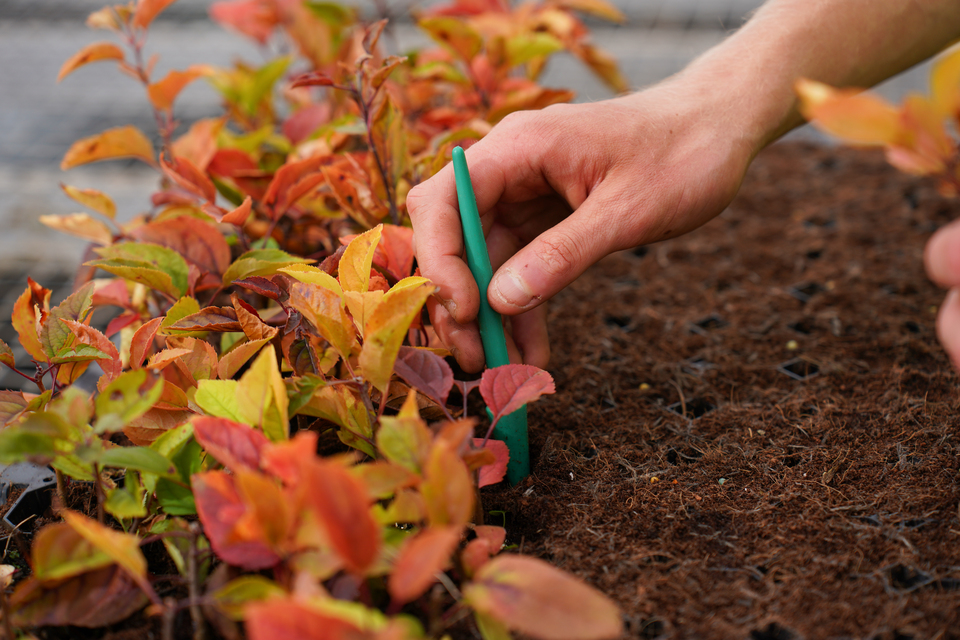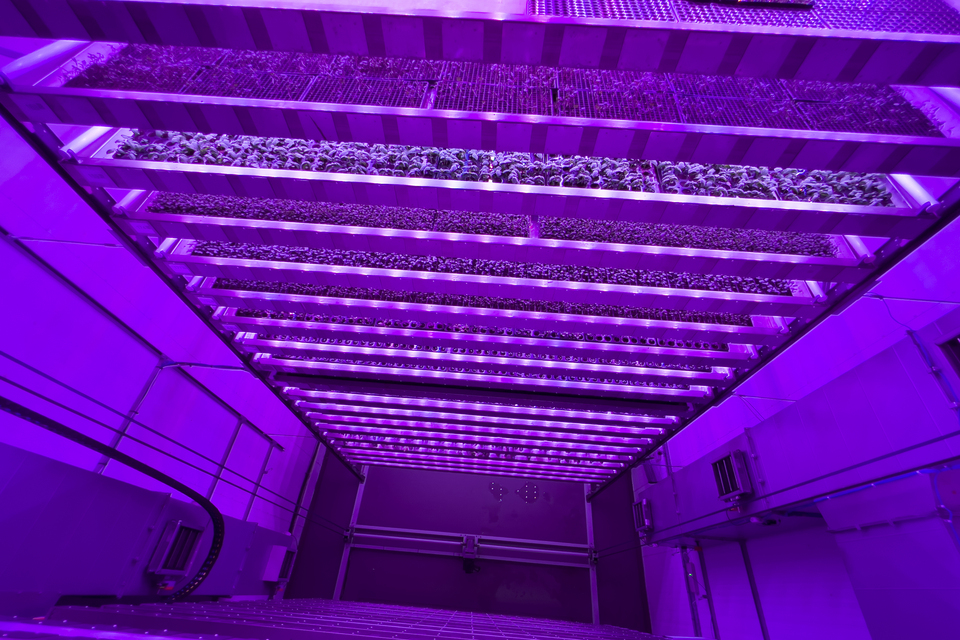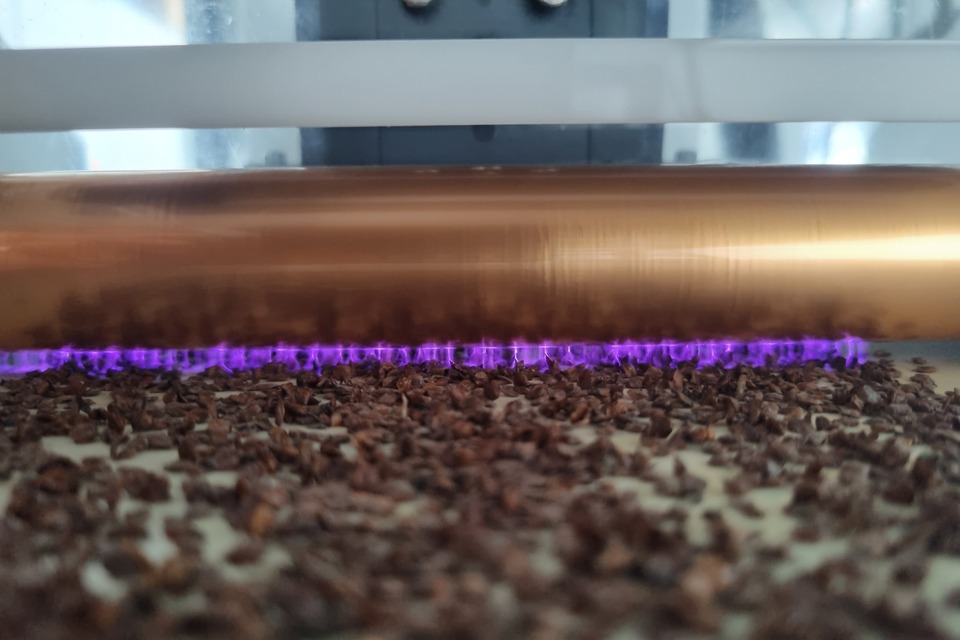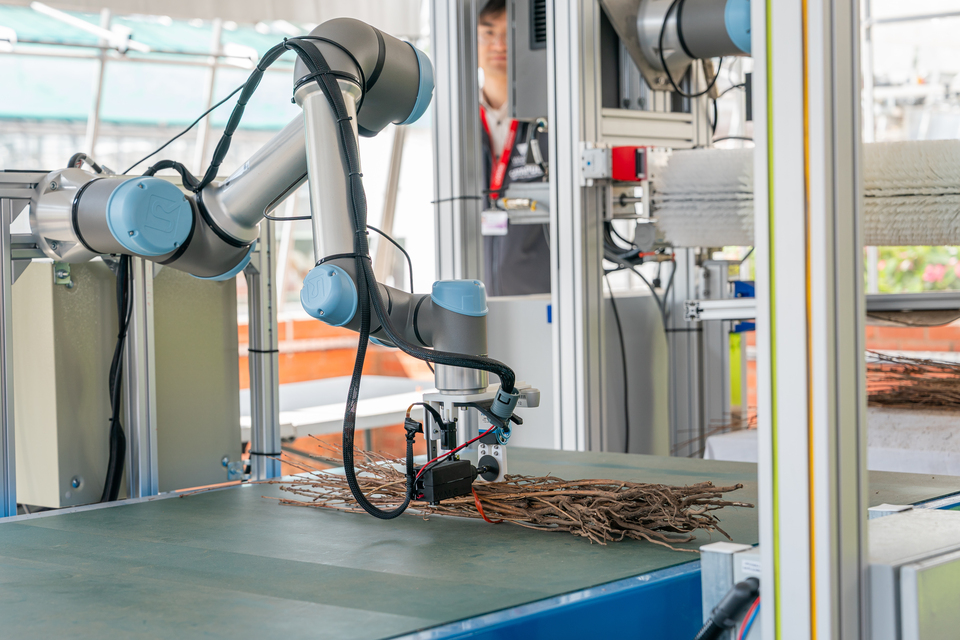Successful projects 2025
Published 24 November 2025
Applies to England
The Tree Production Innovation Fund (TPIF) supports projects that will enhance or facilitate tree production methods used in the UK. Grant recipients aim to develop new technologies that will overcome barriers to domestic tree production.
Summary of 2025 funding
- total funding allocated: up to £4.5 million
- number of projects funded: 12 projects across 12 organisations
- geographic spread: projects are located across England and Scotland
- project duration: projects will run from 2025 to 2028, subject to spending review
Funded projects
Optimising seed quality and tree establishment with novel 3D X-Ray phenotyping and sorting technologies
- organisation: Elsoms Seeds Ltd
- organisation type: seed specialist and plant breeder
- location: Lincolnshire
Working with partners at Elsoms Trees, phenoLytics GmbH and Forestart, this project will explore the use of novel 3D X-ray computed tomography technology to examine tree seed properties and assess their quality. Based on external and internal seed quality parameters, researchers aim to predict which seeds are most likely to germinate and grow into healthy seedlings and optimise processing accordingly. This will increase the quality and efficiency of tree production processes, resulting in less waste of resource and shorter lead times.

Transplanting crab apple. Credit: Elsoms Seeds Ltd
Rae Cook, Head of Seed Technology at Elsoms Seeds Ltd, said:
This is a wonderful opportunity to enable the project partners to develop knowledge and validate X-ray technologies. From seed collection through to processing and testing, leading to improved tree production at Elsoms Trees and other nurseries, this project will determine and improve tree seed quality right across the supply chain.
It will allow us to investigate a combination of 3D Laser/2D X-ray for advanced sorting of seed, where conventional processing is insufficient to raise quality levels and boost productivity and efficiency in tree plant raising.
Supersizing broadleaves
- organisation: Future Trees Trust
- organisation type: tree breeding charity
- location: Oxfordshire
This project aims to explore the potential of supersizing broadleaves using genetically diverse seed that have been selected for growth and form compared to standard nursery stock. It will explore how a range of nursery and silvicultural methods can be optimised to improve tree growth and establishment.
Destructive whole tree sampling and field trials will be used to evaluate the effects of various production and establishment regimes (treatments). This will provide information on how trees distribute resources like nutrients and water throughout their structure. The project team will also evaluate the effects of treatments on mycorrhizal communities (fungi that grow in association with roots in a symbiotic relationship) around tree roots.
NextGen British conifers
- organisation: Conifer Breeding Co-operative
- organisation type: tree breeding cooperative
- location: UK (various)
The aim of this project is to modernise and accelerate tree breeding in Britain. The project introduces a ‘rolling-front’ tree breeding model that replaces outdated approaches with a data-driven digital platform that delivers genetically improved trees more quickly.
With match funding from cooperative members, the platform will initially build capacity using principal conifers that lead to second-generation Sitka spruce seed orchards. The project will then expand to alternative species programmes, including Scots pine, Douglas fir and Norway spruce.
Tree Cutting Ps and Qs: propagation quality and production quantity
- organisation: University of Nottingham
- organisation type: university
- location: Nottinghamshire
This project aims to provide propagation protocols to partners and the public for growing new UK broadleaf trees from cuttings. Using ‘omics’ technologies, which uncover the full set of chemicals and genes underlying differences in rooting of cuttings, the project will delve deeper into understanding why oak has resisted previous propagation efforts.
Through this project, researchers will gain comprehensive insights into the structure, function and dynamics of root formation in cuttings which they will share to inform future propagation techniques.
Rapid red cedar
- organisation: Intelligent Growth Solutions (IGS)
- organisation type: vertical farming technology manufacturer
- location: Edinburgh
This project aims to implement rapid breeding techniques for western red cedar in England, following protocols developed by scientists in the British Columbia Ministry of Forests. IGS will use vertical farming technology to target several growth stages for shortening, innovating with environmental conditions. Progress will be assessed against a benchmark set by project partners at Forest Research in a traditional nursery setting.
Starting material will come from a subpopulation of ‘plus trees’ identified by the Forestry Commission in the 1960s. Plus trees are individuals selected as outstanding examples of their species due to traits such as good form and fast growth. A field trial will be planted and used to inform recommendations for a western red cedar improvement programme.

The interior of an IGS Growth Tower, a fully automated, vertical, Total Controlled Environment Agriculture platform. Credit: IGS
Dr Mike Charters, Senior Plant Scientist at IGS, said:
IGS is thrilled to have received TPIF support to lead the ‘Rapid Red Cedar’ project, a groundbreaking collaboration between private sector, academia and forest industry partners to accelerate western red cedar breeding.
This project is an exciting opportunity to apply controlled environment technology to shorten generation times in this highly ranked alternative conifer, to pave the way for the targeting of traits of interest and thus a more diverse and resilient forestry future. It’s a perfect example of how innovation can help deliver real-world environmental benefits.
Public funding is critical to making this possible, enabling the use of this technology for forestry-specific research where otherwise food production would take priority.
Optimising plasma treatments for enhanced germination of dormant tree seeds
- organisation: Royal Botanic Gardens, Kew
- organisation type: charity and public body
- location: Wakehurst, Sussex
This project aims to combine experimental research with high throughput 3D X-Ray phenotyping to determine the benefits of innovative plasma treatments for breaking dormancy and improving germination, storage and seedling growth of UK trees. The development of these treatments will enable wider application of these technologies in the forestry sector to improve seed quality and enhance the propagation of trees from seed.

Seeds of Scots pine on a conveyor belt passing beneath a plasma reactor with plasma discharges making direct contact with the surface of the seeds. Credit: Thalita Nishime, Leibniz Institute for Plasma Science and Technology (INP Greifswald)
TREEWAVE – tree production using microwave radio frequency technology
- organisation: Hyper Sciences Agri-Tech Ltd
- organisation type: agricultural engineering
- location: Yorkshire
This project aims to demonstrate and develop the use of radio frequency microwaves for weed control to reduce the use of pre-emergence herbicides and reliance on synthetic chemicals. The project focuses on developing an optimised radio frequency prototype and evaluating the dose response to key weed species against a range of in-field variables.
Grading with AI-powered Automation (GAIA)
- organisation: University of Warwick
- organisation type: university
- location: Warwickshire
GAIA will scale a previously funded TPIF project – the ‘Smart Tree Production System’ (STPS) – to Technology Readiness Level 7. This project aims to automate the labour-intensive process by which trees are processed and sorted based on size (known as grading).
The primary objective is to deliver a pre-commercial grading prototype system, with a strong focus on singulation tasks to automatically separate and grade individual trees. If successful, the system could reduce the need for manual labour in these processes by more than 80%.

STPS, an autonomous robotic grading system to safeguard and increase productivity for bare root tree growers. Credit: University of Warwick
Emilio Loo-Monardez, Principal Engineer – Agri-tech at Warwick Manufacturing Group, said:
STPS is the first steppingstone toward transforming one of the most labour-intensive and delicate nursery tasks – tree grading – by developing an autonomous system for picking, cutting strings and singulation of bundled trees. A key innovation lies in the computer vision systems and robotic dexterity used to detect picking points and perform singulation.
We demonstrated that the process is both scalable and feasible, achieving success rates of 25-76% on singulation depending on species and technique, with an 8-second cycle time per tangled tree. Further developments aim to reduce the current cycle time to a total of 3 seconds and enhance reliability and cost-effectiveness through improved AI self-learning models and exploration of alternative robotic solutions.
Nursery trials to measure performance of NPK Recovery’s bio-based fertiliser valorised from human urine to reduce reliance on synthetic alternatives
- organisation: NPK Recovery Ltd
- organisation type: fertiliser manufacturer
- location: Bristol
This project aims to convert human waste into a safe fertiliser containing all the fundamental nutrients young trees need to grow. The fertiliser will meet environmental standards for safe discharge and researchers will test this fertiliser on UK timber trees grown in nurseries. They will measure whether it improves tree growth and productivity, seed dormancy, root development and tree resilience to environmental stresses like drought or temperature changes.
Cost effective herbicide free weed control in tree production
- organisation: Earth Rover Ltd
- organisation type: agricultural and forestry machinery manufacturer
- location: Shropshire
This project aims to develop algorithms to enable the CLAWS Lightweeder technology to distinguish between young tree seedlings and weeds of different sizes. The technology will then be able deliver a dose of concentrated light to each weed to ensure the right amount of energy is applied for the particular weed type and size. This will make CLAWS more efficient and cost-effective for tree nurseries, providing an alternative to herbicides for weed control.
Irrigation strategy to enhance seedling resilience to compound heat-drought events
- organisation: University of Northumbria at Newcastle
- organisation type: university
- location: Newcastle upon Tyne
This project aims to enhance the resilience of field-grown nursery seedlings against periods of combined heat and drought. Using ecophysiology and modelling, researchers will develop innovative irrigation strategies based on how seedlings respond to and ‘remember’ previous drought conditions. These will be validated in field settings and decision tools to inform irrigation decisions co-created with stakeholders.
Working towards sustainable peat-free and drought resilient growing media and soil amendments in UK forest nurseries
- organisation: Harper Adams University
- organisation type: university
- location: Shropshire
Working with partners at Prees Heath Forest Nurseries, Westland Horticulture, Agrovista and Shropshire County Council, this project will gather evidence that helps tree nurseries adopt more sustainable growing media without losing tree quality or productivity, even as the climate changes.
Researchers will grow cell-grown and bare-root oak trees and measure how well seeds germinate, tree growth and shape, how well trees cope with drought and how the soil responds to different inputs.

